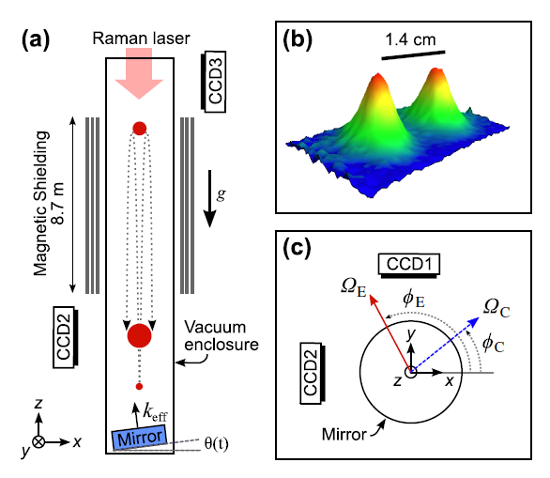Element: Cesium (Cs) Atomic Number: 55 Mass: One stable isotope, mass 133 amu. Laser cooling wavelength: 854nm, but see below. Doppler cooling limit: 125 μK. Chemical classification: Yet another alkali metal, column I of the periodic table. This one isn’t greyish, though! It’s kind of gold color. Still explodes violently in water, though. Other properties… Continue reading Laser-Cooled Atoms: Cesium
Category: Experiment
Laser-Cooled Atoms: Chromium
Element: Chromium (Cr) Atomic Number: 24 Mass: Four “stable” isotopes between 50 and 54 amu. Chromium-50 is technically radioactive, with a half-life considerably longer than the age of the universe, so… Laser cooling wavelength: 425nm, but see below. Doppler cooling limit: 120 μK. Chemical classification: Transition metal, smack in the middle of the periodic table.… Continue reading Laser-Cooled Atoms: Chromium
Laser-Cooled Atoms: Lithium
Element: Lithium (Li) Atomic Number: 3 Mass: Two stable isotopes, masses 6 and 7 amu Laser cooling wavelength: 671 nm Doppler cooling limit: 140 μK. Chemical classification: Alkali metal, column I in the periodic table. Yet another greyish metal. We’re almost done with alkalis, I promise. Less reactive than any of the others, so the… Continue reading Laser-Cooled Atoms: Lithium
Laser-Cooled Atoms: Francium
Element: Francium (Fr) Atomic Number: 87 Mass: Numerous isotopes ranging in mass from 199 amu to 232 amu, none of them stable. The only ones laser cooled are the five between 208 amu and 212 amu, plus the one at 221 amu. Laser cooling wavelength: 718 nm Doppler cooling limit: 182 μK. Chemical classification: Alkali… Continue reading Laser-Cooled Atoms: Francium
Laser-Cooled Atoms: Strontium
Element: Strontium (Sr) Atomic Number: 38 Mass: Four stable isotopes, ranging from 84 to 88 amu Laser cooling wavelength: Two different transitions are used in the laser cooling of strontium: a blue line at 461 nm that’s an ordinary sort of transition, and an exceptionally narrow “intercombination” line at 689 nm. Doppler cooling limit: 770… Continue reading Laser-Cooled Atoms: Strontium
Spooky Action at What Distance?
When I wrote up the giant interferometer experiment at Stanford, I noted that they’ve managed to create a situation where the wavefunction of the atoms passing through their interferometer contains two peaks separated by almost a centimeter and a half. This isn’t two clouds of atoms each definitely in a particular position, mind, this is… Continue reading Spooky Action at What Distance?
Laser-Cooled Atoms: Xenon
Element: Xenon (Xe) Atomic Number: 54 Mass: nine “stable” isotopes, masses from 124 to 136 amu. Xenon-136 is technically radioactive, but with a half-life of a hundred billion billion years, so, you know, it’s pretty much stable. Laser cooling wavelength: 882 nm Doppler cooling limit: 120 μK Chemical classification: Noble gas, part of column VIII… Continue reading Laser-Cooled Atoms: Xenon
Laser-Cooled Atoms: Helium
Element: Helium (He) Atomic Number: 2 Mass: two stable isotopes, 3 and 4 amu. Laser cooling wavelength: 1083 nm Doppler cooling limit: 38 μK (It should be noted, though, that despite the low temperature, laser-cooled helium has a relatively high velocity– that Doppler limit corresponds to an average velocity that’s just about the same as… Continue reading Laser-Cooled Atoms: Helium
Eddington, Neutrinos, and the Changing of Meaning by Context
I’m writing a bit for the book-in-progress about neutrinos– prompted by a forthcoming book by Ray Jaywardhana that I was sent for review– and in looking for material, I ran across a great quote from Arthur Stanley Eddington, the British astronomer and science popularizer best known for his eclipse observations that confirmed the bending of… Continue reading Eddington, Neutrinos, and the Changing of Meaning by Context
Point Sources and Towers: “Multiaxis Inertial Sensing with Long-Time Point Source Atom Interferometry”
A little over a year ago, I visited Mark Kasevich’s labs at Stanford, and wrote up a paper proposing to use a 10-m atom interferometer to test general relativity. Now, that sounds crazy, but I saw the actual tower when I visited, so it wasn’t complete nonsense. And this week, they have a new paper… Continue reading Point Sources and Towers: “Multiaxis Inertial Sensing with Long-Time Point Source Atom Interferometry”







